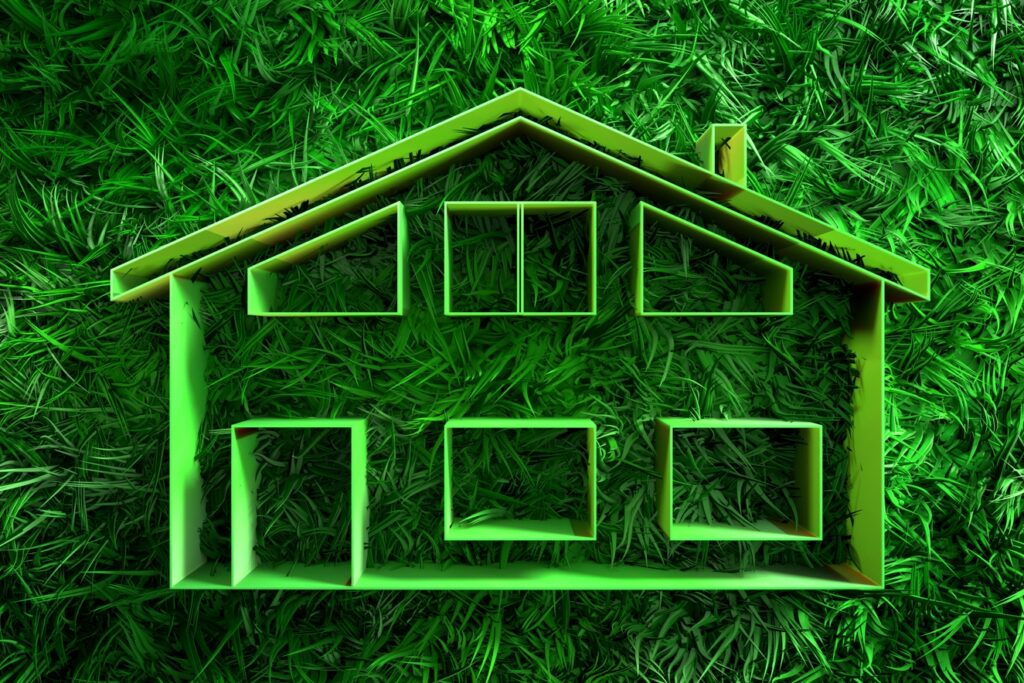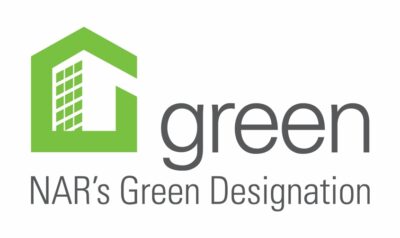
Older homes in Northern Virginia, with their unique character and history, often present a challenge when it comes to energy efficiency. With our region’s distinct four seasons—hot, humid summers and reasonably cold winters—leaky windows, inadequate insulation, and outdated systems can lead to significant energy waste and soaring utility bills. But fear not! By strategically implementing energy-efficient upgrades, you can transform your vintage abode into a comfortable, sustainable, and cost-effective haven.
This comprehensive guide will delve into the top energy-efficient upgrades specifically tailored for older homes in our area, providing detailed insights and practical advice to help you make informed decisions.
- Sealing Air Leaks: The Foundation of Energy Efficiency in NOVA
Addressing air leaks is the most fundamental step in improving your home’s energy performance. Older homes are particularly susceptible to air leakage due to gaps and cracks around windows, doors, pipes, and electrical outlets.
- Weatherstripping and Caulking:
- Thoroughly inspect all windows and doors for gaps. Apply high-quality weatherstripping (foam, felt, or rubber) around movable parts and durable caulk around stationary frames.
- Pay close attention to areas where different building materials meet, such as brick and wood, common in older NOVA homes.
- Use a caulk that’s specifically designed for the materials and weather conditions in NOVA:
- For outdoor use, choose a caulk labeled “exterior” or “all-weather.” These are formulated to withstand our temperature extremes, rain, and UV exposure.
- If you’re sealing around windows and doors, look for a caulk that’s flexible and paintable. Silicone or polyurethane caulk are good options, especially with our temperature fluctuations.
- For sealing around masonry, like brick or stone, common in many older homes in our area, use a masonry-specific caulk. These are designed to adhere to porous surfaces and resist moisture.
- Given our humid summers, consider a caulk with mildew resistance. This will prevent mold growth.
- For areas where two different materials meet (e.g., wood and metal), a caulk with good adhesion to both is necessary.
- Sealing Penetrations:
- Identify and seal air leaks around pipes, wires, and ducts that penetrate walls, floors, and ceilings. Use expanding foam or caulk to effectively fill these openings.
- Don’t overlook the attic and basement, as they are often major sources of air leakage, especially in our region’s varied terrain.
- Fireplace Dampers:
- Ensure your fireplace damper is tightly sealed when not in use.
- Consider installing a top-sealing damper for enhanced efficiency, especially important during our cold winters.
- Weatherstripping and Caulking:
- Insulation: Creating a Thermal Barrier for NOVA’s Climate
Proper insulation is essential for maintaining a consistent indoor temperature and minimizing energy consumption in our fluctuating climate.
- Attic Insulation:
- The attic is where a significant amount of heat escapes in the winter. Increase the insulation level to at least R-49 (approximately 16 inches of fiberglass or cellulose).
- Blown-in insulation is an excellent option for filling gaps and crevices in attics, common in older homes with complex rooflines.
- Wall Insulation:
- Older homes may have inadequate or no wall insulation.
- Options include blown-in insulation (cellulose or fiberglass), rigid foam insulation, and spray foam insulation.
- Blown in insulation is a good option when you want to avoid removing siding, preserving the historic look of many NOVA homes.
- Rigid foam can be applied to the exterior and then covered with new siding.
- Foundation Insulation:
- Insulating foundation walls can significantly reduce heat loss through the basement or crawl space, especially important in our region’s cold winters.
- Rigid foam insulation is commonly used for foundation walls.
- In crawl spaces, ensure the vapor barrier is intact, crucial for preventing moisture issues in our humid summers.
- Attic Insulation:
- Window and Door Upgrades: Enhancing Comfort and Efficiency in Northern Virginia
Outdated windows and doors can be major sources of energy loss in our region’s diverse climate.
- Window Replacement:
- Replace old, single-pane windows with energy-efficient models, such as double- or triple-pane windows with low-E coatings and argon or krypton gas fills.
- Look for ENERGY STAR certified windows that are appropriate for our climate zone (Zone 4).
- Proper installation is crucial for maximizing energy efficiency.
- Door Replacement:
- Replace old, drafty doors with insulated models that have proper weatherstripping and thresholds.
- Consider installing storm doors for added protection against our winter winds.
- Window and Door Film:
- This is a less expensive option than full replacement. Energy efficient films can reduce the amount of heat entering a home during our hot summers, and add a bit of insulation during our cold winters.
- HVAC System Improvements: Optimizing Heating and Cooling for NOVA’s Seasons
An outdated HVAC system can be a major energy drain, especially with our distinct seasonal shifts.
- Furnace and Air Conditioner Replacement:
- Replace old, inefficient furnaces and air conditioners with ENERGY STAR certified models.
- When selecting new equipment, pay close attention to the specific efficiency ratings. For furnaces, look for an AFUE (Annual Fuel Utilization Efficiency) rating of 90% or higher to handle our cold winters efficiently. For air conditioners, aim for a SEER (Seasonal Energy Efficiency Ratio) rating of 15 or higher to combat our hot, humid summers.
- Consider Heat pump systems. They are becoming very popular in this region, as they can both heat and cool. They are very efficient, and can handle our climate.
- Duct Sealing and Insulation:
- Seal leaky duct joints with mastic or metal tape and insulate ducts in unconditioned spaces, such as attics and crawl spaces, to ensure efficient air distribution throughout the year.
- Programmable Thermostat:
- Install a programmable or smart thermostat to automatically adjust the temperature based on your schedule. This is especially useful in NOVA, where we experience significant temperature fluctuations between day and night.
- Furnace and Air Conditioner Replacement:
- Water Heating Efficiency: Conserving Water and Energy in Our Region
Water heating accounts for a significant portion of household energy use.
- Water Heater Replacement:
- Consider replacing an old water heater with a high-efficiency model, such as a heat pump water heater or tankless water heater.
- Tankless water heaters only heat the water when needed, which can be beneficial in our region, where we may have periods of lower water usage.
- Pipe Insulation:
- Insulate hot water pipes to reduce heat loss, especially important during our cold winters.
- Low-Flow Fixtures:
- Install low-flow showerheads and faucets to reduce water consumption. This also helps conserve water resources, which is important in our growing region.
- Water Heater Replacement:
- Lighting Upgrades: Embracing LED Technology for Brighter, Efficient Homes
Traditional incandescent light bulbs are highly inefficient.
- LED Lighting:
- Replace incandescent and CFL bulbs with LED bulbs, which are significantly more energy-efficient and have a longer lifespan.
- When shopping for LED bulbs, pay attention to the lumens, color temperature, and CRI (Color Rendering Index) to ensure they meet your lighting needs.
- Due to the frequent thunderstorms in this area, LED bulbs are a great option due to their long lasting features.
- Daylighting:
- Maximize natural light by opening curtains and blinds during the day. This can help reduce the need for artificial lighting, especially during our sunny days.
- LED Lighting:
- Appliance Upgrades: Modernizing Your Home for Efficiency
Old appliances can be energy hogs.
- ENERGY STAR Appliances:
- When replacing appliances, choose ENERGY STAR certified models. However, remember that ENERGY STAR ratings represent a range of efficiency levels. Research specific models and compare their energy consumption to make informed choices. For example, some Energy Star refrigerators use significantly less energy than other energy star rated models.
- Appliance Maintenance:
- Regularly clean and maintain appliances to ensure they operate efficiently. This is particularly important for air conditioners and refrigerators during our hot summers.
- ENERGY STAR Appliances:
- Energy Audits: Pinpointing Energy Losses in Your Home
- What is an Energy Audit?
- An energy audit is a comprehensive assessment of your home’s energy performance. It involves a thorough inspection of your home’s insulation, air leakage, HVAC system, lighting, and appliances.
- What’s Involved?
- A certified energy auditor will use specialized equipment, such as blower door tests and infrared cameras, to identify areas of energy loss. They will then provide a detailed report with recommendations for energy-saving upgrades.
- Who Performs Energy Audits?
- Energy audits are typically performed by certified professionals, such as building performance contractors or energy auditors. You can find certified professionals through organizations like the Building Performance Institute (BPI) or RESNET.
- Why get one?
- An energy audit allows you to prioritize upgrades, and know exactly where your home is losing energy. This saves money and ensures the best possible outcome, especially in our region, where energy costs can fluctuate.
- What is an Energy Audit?
- Cost-effectiveness: Prioritize upgrades that offer the greatest energy savings for the lowest cost, considering our region’s energy prices.
- Climate: Consider the specific climate challenges in Northern Virginia, such as our hot, humid summers and cold winters.
- Energy Audit Results: Use the data from your energy audit to guide your decisions.
- Budget: Develop a realistic budget and prioritize projects based on your financial resources.
Prioritizing Your Upgrades in Northern Virginia
By implementing these energy-efficient upgrades, you can transform your older Northern Virginia home into a comfortable, sustainable, and energy-efficient living space, perfectly suited for our region’s unique climate and lifestyle.



